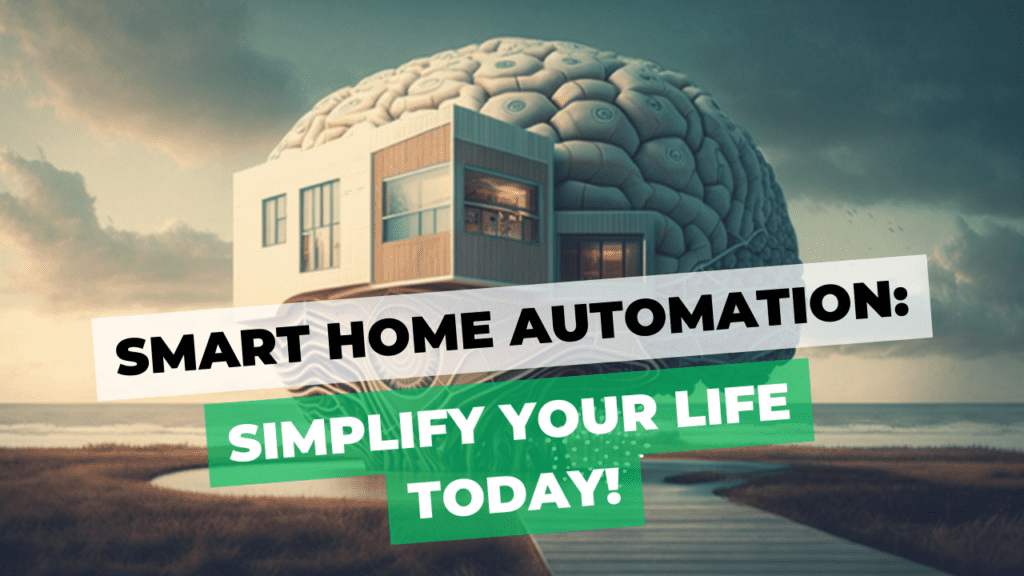Article Summary
Smart home automation is becoming popular and more customizable by the day. It brings conveniences that are hard to overlook. In this article I go over all of the pros & cons, details, and some frequently asked questions to help you figure out system planning as well as how smart home automation can be a benefit in your life.
Smart home automation means gone are the days of manually adjusting thermostats, turning off lights, and locking doors before leaving the house. In recent years my life has obviously gotten busy with the addition of 2 kids. It has been difficult trying to balance time and also be make the best use of any free time that might come along. I went down a path of trying to figure out how I could optimize my day and time a bit and see what ways this could happen.
I feel like smart home automation provides a lot of potential to achieve some streamlined processes that otherwise might take up a fair bit of time on a weekly basis. With the rise of the Internet of Things (IoT) and smart home automation technology, the future is here. Homes can now be fully automated, with devices working together to create a seamless, efficient, and comfortable living environments. In this comprehensive guide, I will explore what smart home automation is, how it works, what you need to know to get started, and also answer some commonly asked questions along the way.
What is Smart Home Automation?
Smart home automation refers to the use of technology to control and automate various aspects of a home. This can include anything from lighting and temperature control to security systems and entertainment systems. Smart home automation devices are designed to work together to create a seamless, intuitive user experience.
The technology behind smart home automation is based on the Internet of Things (IoT). In general, IoT refers to the network of devices that are connected to the internet and can communicate with each other. This means that smart home devices can be controlled remotely, even when the user is away from home.
A Brief History of Smart Home Automation
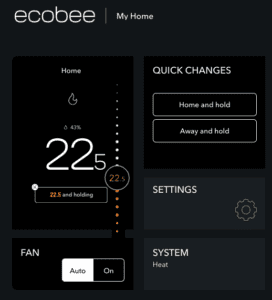 The concept of a fully automated home has been around for decades, but it wasn’t until the early 2000s that smart home automation technology became more widely available. The first smart home automation devices were focused mainly on energy efficiency, such as programmable thermostats and lighting controls.
The concept of a fully automated home has been around for decades, but it wasn’t until the early 2000s that smart home automation technology became more widely available. The first smart home automation devices were focused mainly on energy efficiency, such as programmable thermostats and lighting controls.
Over the years, the technology has evolved, and smart home automation devices are now available in a variety of categories, including lighting, security, heating/cooling, entertainment, and more. Here are some examples of smart home devices. Additionally, the rise of voice assistants such as Amazon Alexa and Google Assistant has made it easier to control smart home devices using voice commands.
Devices and Technology
Smart home automation devices can be broken down into several categories. Some of the most popular categories include:
Lighting
Smart lighting systems allow users to control their lighting using an app or voice commands. This can include dimming lights, changing the color temperature, and creating schedules to turn lights on and off at specific times.
Security
Smart home security systems include devices such as cameras, door locks, and motion sensors. These devices can be controlled remotely and can provide users with notifications when motion is detected or when someone enters the home.
Heating/Cooling
Smart thermostats allow users to control their home’s temperature using an app or voice commands. These devices can create schedules to adjust the temperature based on the user’s preferences and can also be programmed to adjust the temperature based on whether someone is home or away.
Entertainment
Smart home entertainment systems include devices such as smart TVs and speakers. These devices can be controlled using an app or voice commands and can be integrated with other smart home devices.
All smart home automation devices work by connecting to the internet and communicating with each other. This is typically done using a smart home automation platform such as Amazon Alexa, Google Assistant, or Apple HomeKit. These platforms allow users to control all of their smart home devices using a single app or voice assistant.
Cleaning
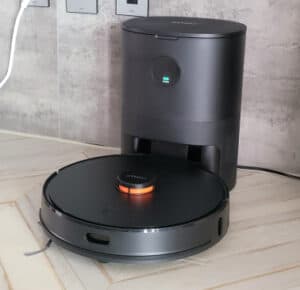 Smart Vacuums are intelligent cleaning devices that are designed to navigate your home autonomously, collecting dirt, dust, and other debris from your floors. These devices come equipped with advanced sensors, cameras, and other features that enable them to navigate around obstacles and reach tight spaces that are difficult to clean manually. Smart vacuums can be programmed to clean on a schedule, so you don’t have to worry about forgetting to vacuum. They also come with features like voice control and mobile apps, making them easy to use and customize. With a smart vacuum, you can enjoy a cleaner home without lifting a finger!
Smart Vacuums are intelligent cleaning devices that are designed to navigate your home autonomously, collecting dirt, dust, and other debris from your floors. These devices come equipped with advanced sensors, cameras, and other features that enable them to navigate around obstacles and reach tight spaces that are difficult to clean manually. Smart vacuums can be programmed to clean on a schedule, so you don’t have to worry about forgetting to vacuum. They also come with features like voice control and mobile apps, making them easy to use and customize. With a smart vacuum, you can enjoy a cleaner home without lifting a finger!
Watering
A smart water irrigation controller is a device that automatically controls the watering of your lawn or garden. It can be programmed to water your plants at specific times of the day, adjust watering schedules based on weather conditions, and even detect leaks or broken sprinkler heads. The benefits of using a smart water irrigation controller are numerous. First and foremost, it saves water by ensuring that only the necessary amount of water is used for your lawn or garden. This not only helps to conserve water but can also save you money on your water bills. Additionally, it saves a ton of time compared to manually watering. With a smart water irrigation controller, you can take the guesswork out of watering your lawn or garden and enjoy a lush, green landscape all season long.
Benefits and Challenges
Smart home automation has a variety of benefits, including improved energy efficiency, convenience, and security. Some of the main benefits of smart home automation include:
Improved Energy Efficiency
Smart home devices such as smart thermostats and lighting controls can help users save energy and reduce their utility bills. For example, smart thermostats can adjust the temperature based on the user’s preferences and whether someone is home or away, which can help to reduce energy usage and save money.
Convenience
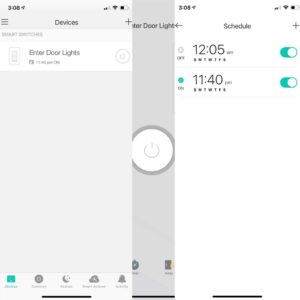 Smart home automation can make everyday tasks more convenient. For example, smart lighting systems can be programmed to turn on and off at specific times, so users don’t have to worry about manually controlling the lights. Additionally, voice assistants such as Amazon Alexa and Google Assistant can be used to control smart home devices using voice commands, which can be especially convenient for people with disabilities or mobility issues.
Smart home automation can make everyday tasks more convenient. For example, smart lighting systems can be programmed to turn on and off at specific times, so users don’t have to worry about manually controlling the lights. Additionally, voice assistants such as Amazon Alexa and Google Assistant can be used to control smart home devices using voice commands, which can be especially convenient for people with disabilities or mobility issues.
Security
Smart home security systems can provide users with peace of mind by allowing them to monitor their home remotely. For example, smart cameras can send notifications when motion is detected or when someone enters the home, and smart locks can be used to lock and unlock doors remotely.
However, there are also some potential downsides to smart home automation. These can include:
Cost
Smart home automation devices can be expensive, and the cost can quickly add up if a user wants to automate their entire home. Additionally, some devices may require professional installation, which can also add to the cost.
Privacy Concerns
Smart home devices are connected to the internet, which means that they are potentially vulnerable to hacking or cyber attacks. This can put a user’s personal information and privacy at risk.
Compatibility Issues
Not all smart home devices are compatible with each other, which can make it difficult to create a seamless user experience. Additionally, some devices may require a specific smart home automation platform, which can limit a user’s options.
I saw this video from the Smart Home Solver gives a lot of good information and answers a number of questions to go through the process of different devices for home automation. He packs a lot of information into a video that is only just over 11 minutes long. Definitely give this a watch now or put it on your to do list.
To make it easier to navigate the video if you are in a hurry or just want to view some main specifics here is a list of important timestamps. 0:18 IFTTT, 0:45 Alex/Google, 1:39 Smart Hubs, 2:34 Light Switches, 3:52 Light Bulbs, 5:26 Doorbells, 6:29 Cameras, 7:11 Smart Locks, 7:56 Thermostats, 8:50 Vacuums, 9:21 Sprinkler Controls, 10:14 Compatibility.
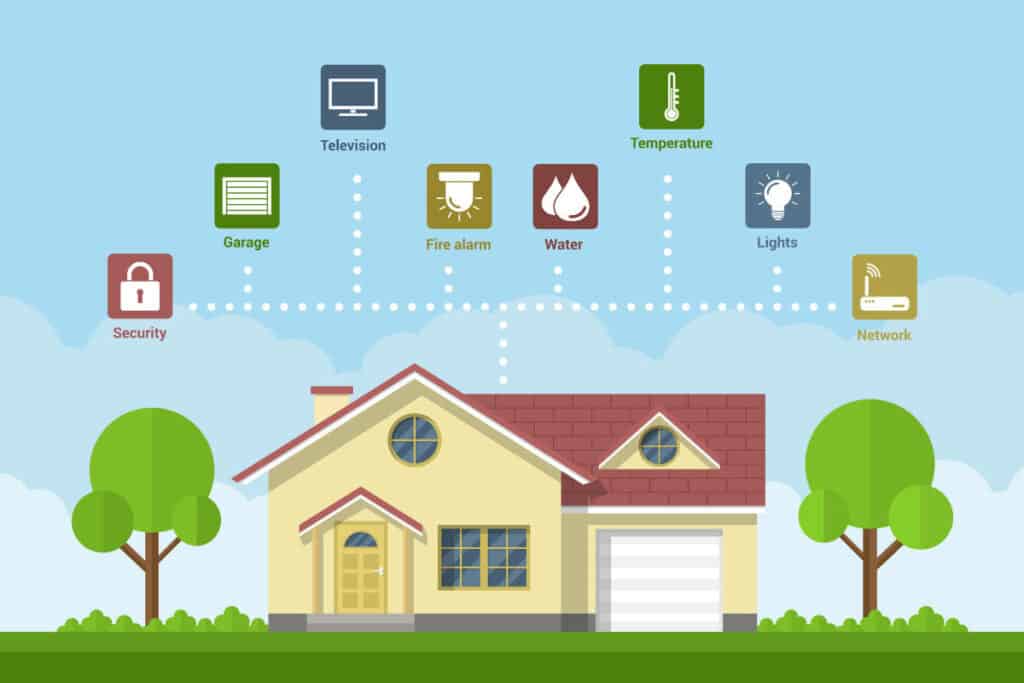
Getting Started with Smart Home Automation
If you’re interested in getting started with smart home automation, there are several steps you can take to get started:
Identify Your Needs
The first step is to identify which areas of your home you want to automate. This can include anything from lighting and temperature control to security systems and entertainment systems.
Set a Budget
Smart home automation devices can be expensive, so it’s important to set a budget before getting started. Consider which devices are most important to you and how much you’re willing to spend.
Do Your Research
Before purchasing any smart home automation devices, it’s important to do your research. Read reviews, compare prices, and make sure that the devices you’re considering are compatible with each other.
Choose the Right Devices and Platform
When choosing smart home automation devices, consider which devices are most important to you and how they will integrate with each other. Additionally, choose a smart home automation platform that is compatible with the devices you want to use.
Installation and Setup Considerations
Some smart home automation devices may require professional installation, while others can be installed by the user. Make sure to read the manufacturer’s instructions carefully and follow all safety guidelines.
Examples of Smart Home Automation Use Cases
There are countless ways to use smart home automation, and the possibilities are constantly expanding. Here are just a few examples of smart home automation use cases:
- Controlling lighting and temperature using a smart thermostat and lighting controls
- Setting up a smart home security system using cameras and smart locks
- Automating entertainment systems using smart TVs and speakers
- Creating a smart home office using smart speakers and lighting controls
I was glad I found this video by Everything Smart Home as he picks what he thinks 12 of the best smart automation ideas are from other You-tubers. He is super knowledgeable so I was thankful to get his thoughts of what others were also saying. The video is a little longer than I usually feature, just over 20 minutes long, but worth the watch for sure.
Smart Home Automation Frequently Asked Questions
What is an example of smart home automation?
An example of smart home automation is a smart thermostat that can be controlled using an app or voice commands. Smart thermostats can learn a user’s preferences and adjust the temperature based on whether someone is home or away, which can help to save energy and reduce utility bills.
Which technology is best for home automation?
There are several smart home automation platforms available, including Amazon Alexa, Google Assistant, and Apple HomeKit. The best technology for home automation will depend on the user’s needs and preferences, as well as which devices they want to use.
Is smart home automation worth it?
Smart home automation can be worth it for those who want to create a more convenient, energy-efficient, and secure living environment. However, it’s important to consider the potential downsides, such as cost, privacy concerns, and compatibility issues.
What is the difference between smart home & home automation?
Smart home automation refers specifically to the use of technology to control and automate various aspects of a home, such as lighting and temperature control. Home automation is a broader term that can include any type of automation in the home, such as automatic door locks or garage door openers.
Can someone hack a smart house?
Yes, it is possible for someone to hack a smart house if they are able to gain access to the smart home automation devices. However, there are steps that users can take to minimize the risk of hacking, such as using strong passwords and keeping devices up to date with the latest software.
Can smart home devices spy on you?
While it is technically possible for smart home devices to spy on users, it is unlikely as long as the devices are purchased from reputable manufacturers and kept up to date with the latest software. Additionally, users can take steps to protect their privacy, such as reviewing the privacy policy of each device and using strong passwords.
What is the most popular smart home system?
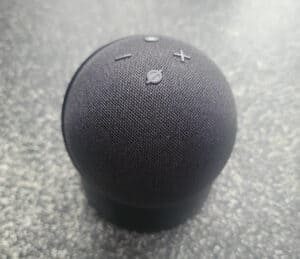 The most popular smart home systems include Amazon Alexa, Google Assistant, and Apple HomeKit. These platforms allow users to control all of their smart home devices using a single app or voice assistant.
The most popular smart home systems include Amazon Alexa, Google Assistant, and Apple HomeKit. These platforms allow users to control all of their smart home devices using a single app or voice assistant.
What are the 3 common uses of home automation?
The three common uses of home automation are lighting control, temperature control, and security systems. Smart lighting systems allow users to control their lighting using an app or voice commands, while smart thermostats can be used to control the home’s temperature. Smart home security systems can include devices such as cameras, door locks, and motion sensors.
Who is the leader in home automation?
The leader in home automation can vary depending on the specific category of automation. Amazon Alexa is the most popular voice assistant for smart home automation, while companies such as Nest and Ecobee are leaders in smart thermostats. However, there is no single company that dominates all categories of home automation.
What are the dangers of smart home devices?
The dangers of smart home devices include potential privacy and security concerns, such as the risk of hacking or cyber attacks. Additionally, some smart home devices may collect personal data, such as usage patterns or location data. Though not technically a danger, smart home devices can be expensive, and even though you can pay a premium, some devices may still have compatibility issues when trying to integrate devices from different manufacturers.
How often are smart homes hacked?
The frequency of smart home hacking is difficult to determine, as many hacks may go unreported or unnoticed. However, it is important for users to take steps to protect their smart home devices and minimize the risk of hacking, such as using strong passwords and keeping devices up to date with the latest software. It is also recommended that users avoid purchasing smart home devices from unknown or unverified sources, and instead purchase from reputable manufacturers.
Finally, it’s important to review the privacy policy of each device and understand what data is being collected and how it is being used. By taking these steps, users can minimize the risk of smart home hacking and enjoy the benefits of smart home automation.
Conclusion
Smart home automation is no longer a thing of the future; it’s here and now, and it’s more accessible than ever. By using smart home automation devices and platforms, users can create a more convenient, energy-efficient, and secure living environment. However, it’s important to consider the potential downsides of smart home automation, such as cost, privacy concerns, and compatibility issues.
If you’re interested in getting started with smart home automation, take the time to identify your needs, set a budget, do your research, and choose the right devices and platform. With the right tools and knowledge, you can create a seamless, intuitive, and efficient smart home automation solution that meets all of your needs.
